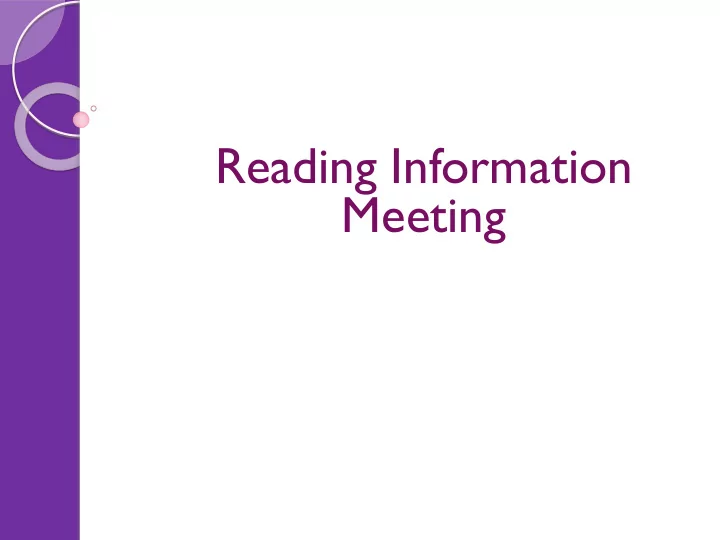

Reading Information Meeting
Areas of English • Reading • Speaking and Listening • Writing
Reading in the National Curriculum There are three main elements of reading within the National Curriculum. 1. Word Reading 2. Comprehension 3. Reading for Pleasure This is across, fiction, non-fiction and poetry. What access to reading does your children have at home?
Reading activity Can you read this? I cnduo't bvleiee taht I culod aulaclty uesdtannrd waht I was rdnaieg. Unisg the icndeblire pweor of the hmuan mnid, aocdcrnig to rseecrah at Cmabrigde Uinervtisy, it dseno't mttaer in waht oderr the lterets in a wrod are, the olny irpoamtnt tihng is taht the frsit and lsat ltteer be in the rhgit pclae. The rset can be a taotl mses and you can sitll raed it whoutit a pboerlm. Tihs is bucseae the huamn mnid deos not raed ervey ltteer by istlef, but the wrod as a wlohe. Aaznmig, huh?
Reading at Canon Popham • Teaching reading: phonics • Shared reading (Big books/SMARTboard) • Subjects across the curriculum linked to books • Reading across the curriculum • Genres: Fiction, non-fiction, poetry, plays • Individual reading books • Library books
How we teach word reading KS1 ‘Common Exception Words’ - words that need to be read by sight without being sounded out (as this is not possible). Vocabulary - understanding the meaning of words. Fluency - Reading speed of 90 words per minute with expression and understanding .
How we teach Reading Comprehension QUESTIONING IS KEY What type of text is this book? (Fiction/Non-Fiction) Have you read any other books by this author? What do you think the book will be about? (Prediction) Can you find an example of an adjective/adverb on this page? Why did [the character] feel sad? What do you think might happen next? Why? (Based on what read so far) What does the word [insert word] mean? What is another word for [word]? Why did {character] do that? What features can you see on the page? (Non-Fiction) What does the word say? Use your sounds. What digraph is in that word?
Reading Content Domains V.I.P.E.R.S
V -Vocabulary
I - Inference
P - Predict
E - Explain
R - Retrieve
S - Sequence
Reading at home Reading is a skill your child should practise every day for at least 15 minutes. Discuss what has been read (V.I.P.E.R.S) Your child can read their school book, magazines, comics or any other book that they have at home. Practise reading common and tricky words. (Common Exception Word mat) Practise Phase 2 and 3 phonemes (Year 1) Vocabulary – Discuss the meaning of unknown words • Fluency – Aim for a reading speed of 90 words per minute with • expression and understanding. Stamina – Encourage children to read for longer periods of time / read • longer texts Reading Records should be communicated in by parents / carers / any adult who has listened to the child read!
Reading Using the text, ask each of the five fingers questions, encourage your child to answer them based on the story they have just read. Questions: • What happened at the beginning of the story? • Who are the main characters? • What was the problem they needed to solve? • What happened in the story? (Ask about beginning, middle, and end) • How did they solve the problem?
Thank you for coming Any questions?
Recommend
More recommend